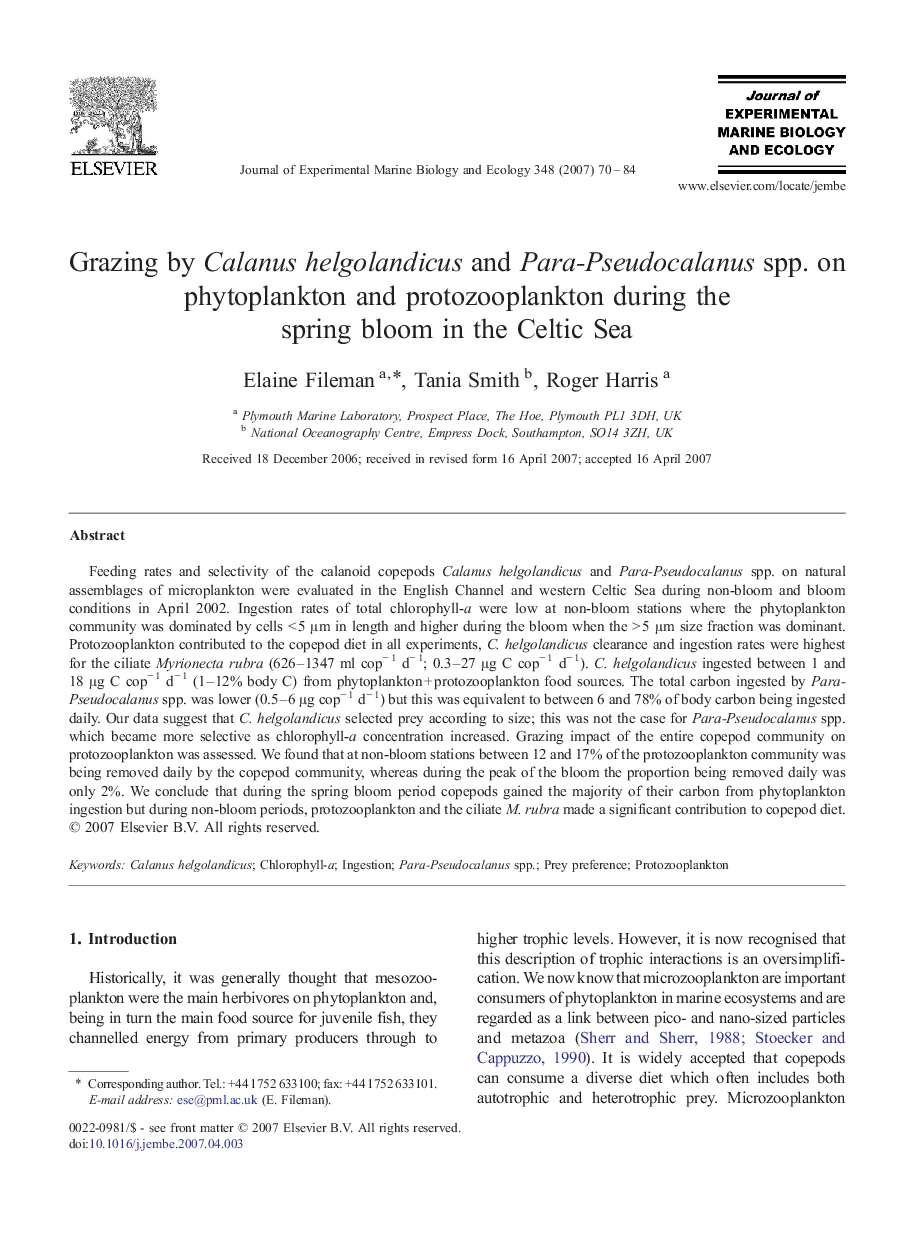| کد مقاله | کد نشریه | سال انتشار | مقاله انگلیسی | نسخه تمام متن |
|---|---|---|---|---|
| 4397629 | 1618489 | 2007 | 15 صفحه PDF | دانلود رایگان |

Feeding rates and selectivity of the calanoid copepods Calanus helgolandicus and Para-Pseudocalanus spp. on natural assemblages of microplankton were evaluated in the English Channel and western Celtic Sea during non-bloom and bloom conditions in April 2002. Ingestion rates of total chlorophyll-a were low at non-bloom stations where the phytoplankton community was dominated by cells < 5 μm in length and higher during the bloom when the > 5 μm size fraction was dominant. Protozooplankton contributed to the copepod diet in all experiments, C. helgolandicus clearance and ingestion rates were highest for the ciliate Myrionecta rubra (626–1347 ml cop− 1 d− 1; 0.3–27 μg C cop− 1 d− 1). C. helgolandicus ingested between 1 and 18 μg C cop− 1 d− 1 (1–12% body C) from phytoplankton + protozooplankton food sources. The total carbon ingested by Para-Pseudocalanus spp. was lower (0.5–6 μg cop− 1 d− 1) but this was equivalent to between 6 and 78% of body carbon being ingested daily. Our data suggest that C. helgolandicus selected prey according to size; this was not the case for Para-Pseudocalanus spp. which became more selective as chlorophyll-a concentration increased. Grazing impact of the entire copepod community on protozooplankton was assessed. We found that at non-bloom stations between 12 and 17% of the protozooplankton community was being removed daily by the copepod community, whereas during the peak of the bloom the proportion being removed daily was only 2%. We conclude that during the spring bloom period copepods gained the majority of their carbon from phytoplankton ingestion but during non-bloom periods, protozooplankton and the ciliate M. rubra made a significant contribution to copepod diet.
Journal: Journal of Experimental Marine Biology and Ecology - Volume 348, Issues 1–2, 7 September 2007, Pages 70–84